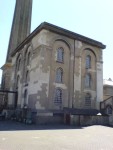 | This three story building houses the two main pumps: located side by side they fill the entire space!
The following pictures show only part of these machines as it is impossible to take a complete picture. |
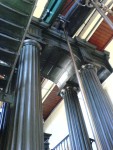 | The beam is supported by four ornate cast iron columns. |
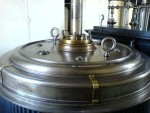 | This is the top of the 99inch (diameter) cylinder. The piston travels 11 feet! |
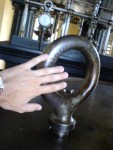 | To give a sense of scale to the previous picture, here is my hand and one of the lift rings... |
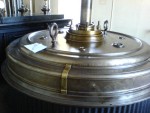 | I placed a regular 8x11" sheet of paper on the cylinder, again trying to show its immense size. |
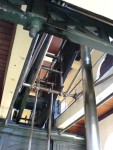 | DSC00107.JPG |
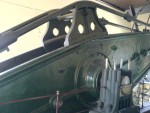 | This is the mid point of the main beam. |
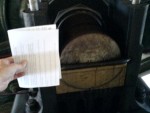 | The main axle supporting the beam appeared to be about 8" in diameter. |
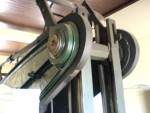 | DSC00110.JPG |
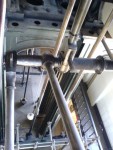 | A view down from the third level. |
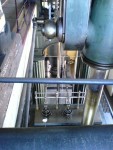 | DSC00112.JPG |
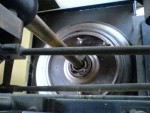 | DSC00114.JPG |
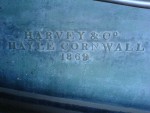 | DSC00115.JPG |
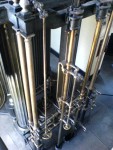 | The "control panel": when starting the pump, an operator had to manualy open and close the valves to drive the steam engine. Once it got up to speed, the operator would let the machine take over and control its own timming. |
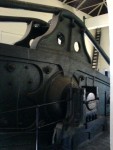 | This is a view of the beam from the 100" pump. |
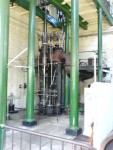 | This is one of three "mid-size" pumps. It is still a two story, house sized machine... |
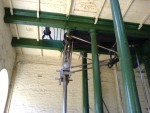 | Here is the pump end of the beam. |
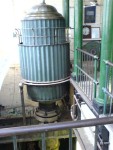 | This is the pump cylinder. Below it is water tank shown in the next picture. |
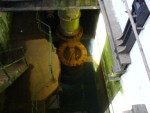 | The water tank, complete with a gold fish (visible in the full size picture when you click on the thumbnail). |
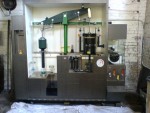 | Here is a modern educational model of this pump. |
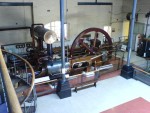 | In the main hall of the museum there are several "small" engines. This one is a cross compound engine. It drives two pumps: one located far below the machine to bring water to the ground level and one to push that water higher still. |
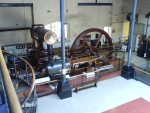 | This engine operated until 1982 when it was dismentled and moved to the museum. |
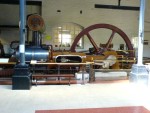 | DSC00067.JPG |
 | DSC00068.JPG |
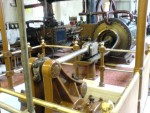 | DSC00098.JPG |
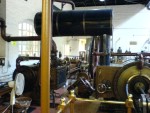 | The cylindrical object visible at the top of this picture is a tank that holds the steam coming out of the high pressure cylinder and going into the low pressure one. |
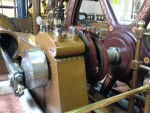 | Each cylinder has two excentrics: one driving the intake valve and one driving the exhaust valve. |
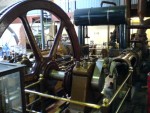 | DSC00101.JPG |
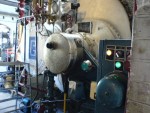 | This a peek at the boiler used to generate the steam for all the engines. It is gas fired and was built in 1929. |
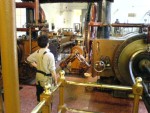 | On the right hand side of the operator you can see a small two cylinder, inverted twin engine: it is used to run the entire machine at a very low speed (several minutes per rotation) to clear the main cylinders from condensate and to position it properly to start. |
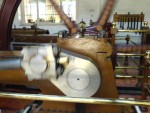 | This and the next view pictures were taken while the machine was operating. |
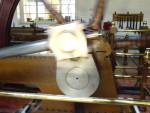 | DSC00127.JPG |
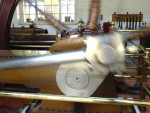 | DSC00128.JPG |
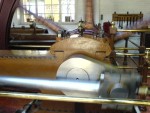 | DSC00129.JPG |
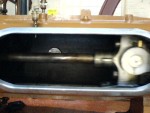 | DSC00130.JPG |
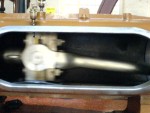 | DSC00132.JPG |
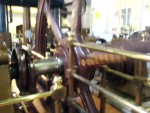 | DSC00134.JPG |
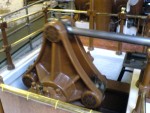 | This triangular piece is driven from the back of the low pressure cylinder and in turns drives two vertical rods attached to the pumps under the floor. |
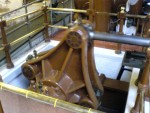 | DSC00143.JPG |
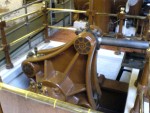 | DSC00144.JPG |
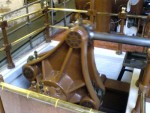 | DSC00145.JPG |
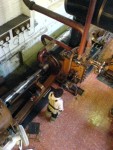 | This view from the second floor balcony shows the back of the high pressure cylinder and its connection to the water pump. |
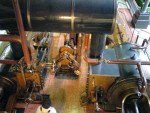 | DSC00151.JPG |
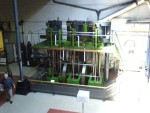 | This is a triple expension steam engine. It was built in 1901. |
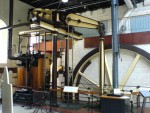 | DSC00069.JPG |
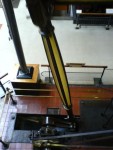 | DSC00082.JPG |
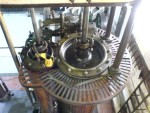 | DSC00078.JPG |
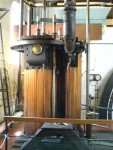 | DSC00070.JPG |
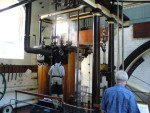 | This is a compound beam engine. |
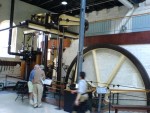 | DSC00075.JPG |
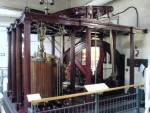 | This is a twin beam two cylinder engine. The tow ylinders are set at 180 degrees from each other as it provides a smoother pump operation. |
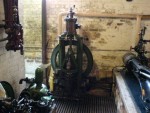 | DSC00072.JPG |
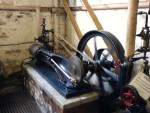 | DSC00073.JPG |
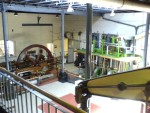 | DSC00154.JPG |
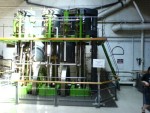 | This is a triple expension machine from 1911. It has an advanced lubrication system enabling it to run for long periods of time with minimal supervision. |
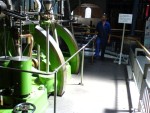 | In order to start, it is has to be in the right position which is acomplished using a long lever which acts on a ratchet mechanism. |
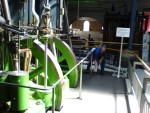 | DSC00084.JPG |
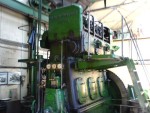 | The museum has a collection of diesel powered pumps. This one was built in the 1930's. There used to be four of them in this building. Two were kept at the museum (this one and one for use as a source of spare parts), the other two were moved to another location to be used for spare parts for other, similar pumps still in use. |
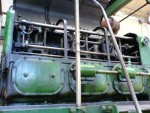 | The engine is run with the valve cover open. It is started on compressed air and then swithed "on the fly" to oil. |
 | This beam sits oustside the museum. It is one of only 8 latice beam ever built and the last one known to exist. Latice beams were lighter than solid models but were much more difficult to cast. |
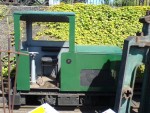 | Outside the museum there is a horse shoe shapped narrow gauge train track. Motive power consists of this gasoline engine and a steam locomotive. Trains only run on Sundays (and I visited on a Saturday). |
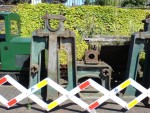 | DSC00064.JPG |
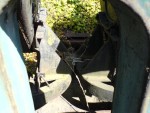 | Next to the locomotive were a couple of side dump cars coupled together with string... |
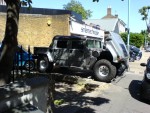 | And now for something completely different: on my way back from the museum, I walk past this Smart dealer... I thought Smart only made small cars... |
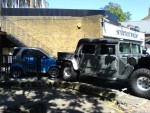 | DSC00158.JPG |
































































